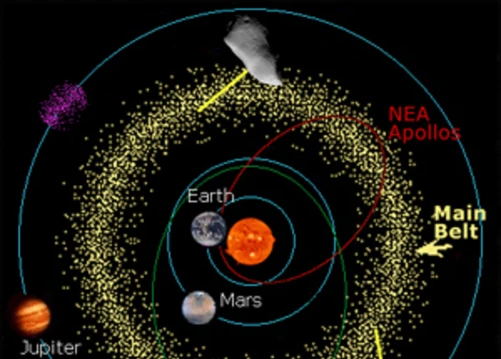What Are Near-Earth Asteroids? These celestial bodies have captured the imagination of scientists and space enthusiasts alike. Near-Earth asteroids are small rocky objects that orbit the Sun and have a close proximity to Earth at some point in their orbits. They are remnants of the early solar system and carry important clues about its origins. However, what makes them particularly fascinating is their potential to pose a threat to our planet. In this article, we will explore key facts about near-Earth asteroids, their characteristics, the potential risks they present, the significance of studying them, current efforts to monitor and study them, as well as future missions and initiatives aimed at further understanding these cosmic neighbors. So fasten your seatbelts and prepare for a journey through the fascinating world of near-Earth asteroids!
Contents
- Characteristics of Near-Earth Asteroids
- Potential Threats from Near-Earth Asteroids
- The Significance of Studying Near-Earth Asteroids
- Current Efforts to Study and Monitor Near-Earth Asteroids
- Future Missions and Initiatives
- Conclusion
-
Frequently Asked Questions
- 1. Can near-Earth asteroids collide with our planet?
- 2. How often do near-Earth asteroids approach Earth?
- 3. Could a near-Earth asteroid cause significant damage?
- 4. How are near-Earth asteroids studied?
- 5. Are near-Earth asteroids a threat to human life?
- 6. Can near-Earth asteroids be redirected or deflected?
- 7. Do near-Earth asteroids have any scientific value?
- 8. Are there any near-Earth asteroids that could be mined for resources?
- 9. Can near-Earth asteroids be used for space missions?
- 10. How are near-Earth asteroids named?
- References
-
Frequently Asked Questions
- 1. How big are near-Earth asteroids?
- 2. What are near-Earth asteroids made of?
- 3. How close do near-Earth asteroids come to our planet?
- 4. Are near-Earth asteroids dangerous?
- 5. How do scientists study near-Earth asteroids?
- 6. Can near-Earth asteroids provide insights into the origins of the solar system?
- 7. Are there any resources on near-Earth asteroids that can be useful for future space exploration?
- 8. How does NASA monitor near-Earth asteroids?
- 9. Are there international collaborations in studying near-Earth asteroids?
- 10. Are there any future missions planned to study near-Earth asteroids?
- References
- Read More
Characteristics of Near-Earth Asteroids
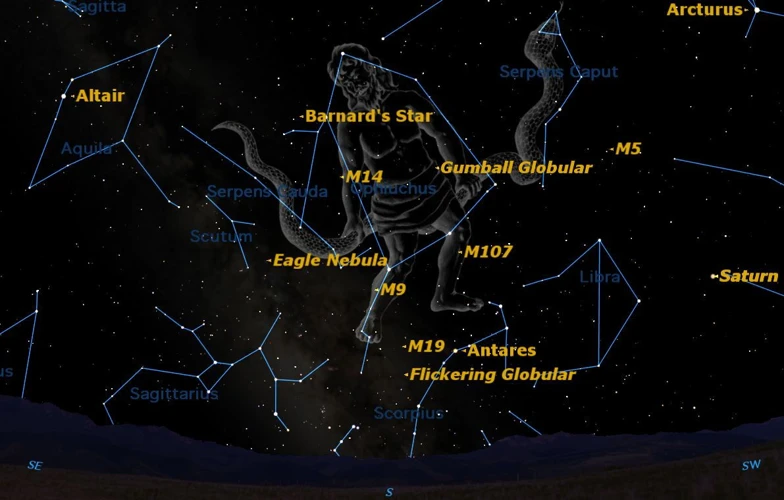
| Characteristics | Description |
|---|---|
| Size and Composition | Near-Earth asteroids come in a variety of sizes, ranging from a few meters to several kilometers in diameter. They are primarily composed of rocky and metallic materials, similar to the composition of the Earth’s crust. Some may also contain valuable resources such as precious metals and water ice, making them potential targets for future mining missions. |
| Orbits and Close Approaches | These asteroids have elliptical orbits that intersect with the path of Earth as they travel around the Sun. The proximity of their orbits to Earth’s orbit allows for close approaches, making them “near-Earth” objects. While most pass by harmlessly at a safe distance, some come incredibly close, within a few thousand kilometers. These close encounters provide opportunities for scientists to study and characterize these objects. |
stay to the topic.
1. Size and Composition
When it comes to near-Earth asteroids, their size and composition play a crucial role in understanding their characteristics. These celestial objects come in various sizes, ranging from a few meters to several kilometers in diameter. Some of the largest near-Earth asteroids, such as 99942 Apophis and 433 Eros, can be several kilometers across, while smaller ones can be as small as a few meters.
In terms of composition, near-Earth asteroids are primarily made up of rocky and metallic materials. They share similarities in composition with the Earth’s crust, containing elements like iron, magnesium, and silicon. Some asteroids may also contain valuable resources such as precious metals and water ice. The presence of these resources has sparked interest in potential future mining missions.
Studying the size and composition of near-Earth asteroids provides valuable insights into their formation and evolution. Scientists can analyze the surface features and mineral compositions of these asteroids using various techniques, including spectroscopy and radar observations. These studies not only enhance our understanding of near-Earth asteroids but also contribute to our knowledge of the formation and evolution of the solar system as a whole.
To learn more about celestial twins, you can check out our article on spotting celestial twins in the Gemini constellation.
2. Orbits and Close Approaches
| Orbits and Close Approaches | Description |
|---|---|
| Near-Earth asteroid orbits | Near-Earth asteroids follow elliptical orbits around the Sun. While some have relatively stable orbits, others have more eccentric paths that may cross the orbit of Earth. These dynamic orbits bring them into close proximity with our planet from time to time. |
| Close approaches | During these close approaches, near-Earth asteroids come remarkably close to Earth’s orbit. While the term “close” is relative in astronomical terms, it usually refers to asteroids passing within a few million kilometers of our planet. In some cases, however, these celestial wanderers can come within a few thousand kilometers of Earth’s surface. |
| Impact probability | While most near-Earth asteroids pose no threat of collision, understanding their orbits is crucial for assessing the potential risks they may pose in the future. By monitoring their paths, scientists can calculate the probability of impact and identify any potential hazards well in advance, allowing for mitigation strategies to be planned and implemented. |
stay to the topic.
Potential Threats from Near-Earth Asteroids
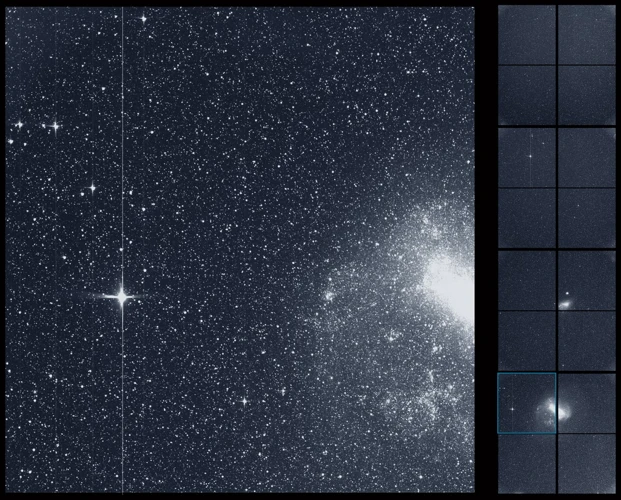
1. Impact Events in the Past: Near-Earth asteroids have been responsible for numerous impact events throughout the history of our planet. These events have had significant consequences, including mass extinctions and the formation of large impact craters. One of the most well-known impact events is the one that is believed to have caused the extinction of the dinosaurs around 65 million years ago. The impact of a large asteroid can have devastating effects, causing widespread destruction and loss of life.
2. Asteroid Impact Risk Assessment: Scientists and researchers are actively involved in assessing the risk posed by near-Earth asteroids and developing strategies to mitigate potential impacts. Several organizations, including NASA and international space agencies, closely monitor the trajectories of known near-Earth asteroids to identify any potential threats. Efforts are underway to enhance our ability to detect and track these objects, as early detection is crucial in implementing effective planetary defense measures.
Despite the potential threats they pose, it’s important to note that the likelihood of a catastrophic asteroid impact is extremely low in the near future. However, continued research and monitoring are vital to ensure the safety and well-being of our planet and its inhabitants.
1. Impact Events in the Past
The history of our planet has been shaped by the impact of near-Earth asteroids. Over billions of years, these cosmic visitors have collided with Earth, leaving behind craters and causing significant changes to the environment. One of the most well-known impact events is the one that is believed to have led to the extinction of dinosaurs around 66 million years ago. The impact crater, known as Chicxulub crater, is located in Mexico and is approximately 180 kilometers in diameter.
Another notable impact event occurred in Tunguska, Russia, in 1908, when a smaller asteroid exploded in the Earth’s atmosphere. The explosion flattened trees and caused widespread damage over an area of about 2,000 square kilometers. These impact events serve as a reminder of the potential destructive power of near-Earth asteroids and the importance of monitoring and studying them to better understand their behavior.
stay to the topic.
2. Asteroid Impact Risk Assessment
Asteroid impact risk assessment is a vital aspect of understanding and managing the potential threats posed by near-Earth asteroids. Scientists and researchers are constantly monitoring and tracking these objects to determine their orbits and predict the likelihood of future impacts. One important tool in this assessment is the Torino Scale, which categorizes the impact risk associated with a particular asteroid. The scale ranges from 0 to 10, with 10 indicating a certain collision with the potential to cause a global catastrophe. So far, no asteroid has been categorized as a level 10 threat. Risk assessment also involves calculating the impact probabilities and potential consequences of an asteroid collision, which helps inform emergency response plans and mitigation strategies. Efforts are ongoing to improve detection and tracking capabilities to ensure early warnings and reduce the impact risks associated with near-Earth asteroids. Stay updated to learn more about the fantastic advances in asteroid impact risk assessment and how they contribute to our understanding of these cosmic neighbors.
[Read more about the Neptune Effect on spirituality and imagination](/the-neptune-effect-imagination-spirituality/).
The Significance of Studying Near-Earth Asteroids
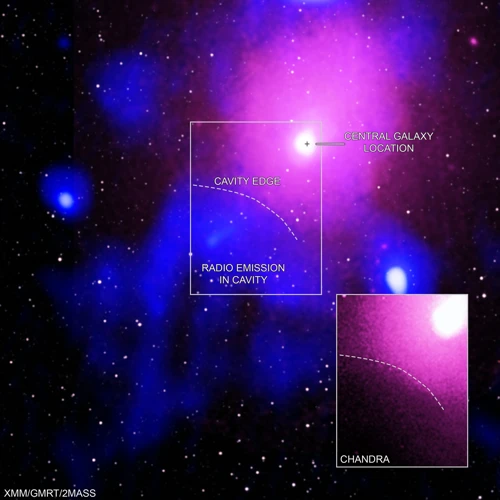
- Clues to the Origins of the Solar System: Studying near-Earth asteroids provides valuable insights into the early stages of our solar system. These asteroids are remnants from the formation of the planets and carry a record of the materials and processes that shaped our cosmic neighborhood. By analyzing their composition and structure, scientists can unravel the mysteries surrounding the birth of planets and the evolution of our solar system. This knowledge contributes to a deeper understanding of how Earth and other planets came to be.
- Resources for Future Space Exploration: Near-Earth asteroids hold great potential as a source of resources for future space missions. These asteroids contain valuable elements such as metals, water, and organic compounds. Mining these resources could provide vital support for long-duration space missions, such as fuel production and building materials. Additionally, the scientific study of these asteroids helps us identify and select targets that are of interest for resource extraction, paving the way for sustainable and self-sufficient space exploration endeavors.
stay with the topic.
1. Clues to the Origins of the Solar System
The study of near-Earth asteroids provides valuable insights into the origins of our solar system. These ancient celestial bodies are believed to be remnants from the early formation of the solar system, preserving valuable information about its early stages. By analyzing the composition and structure of these asteroids, scientists can learn more about the processes that led to the formation of planets, including Earth. The presence of organic compounds and water on some near-Earth asteroids suggests that these essential building blocks for life may have been delivered to our planet through impacts in the distant past. These asteroids offer a window into the dynamic and complex processes that shaped our solar system and continue to impact its evolution. Understanding the origins of the solar system can help answer fundamental questions about our existence and the possibility of life beyond Earth. It’s a fascinating puzzle that scientists are piecing together one near-Earth asteroid at a time.
2. Resources for Future Space Exploration
Future space exploration holds great potential, and near-Earth asteroids can play a crucial role in providing resources for these endeavors. These celestial bodies contain valuable resources such as precious metals, water, and even potential fuel sources like hydrogen and oxygen. Harvesting these resources from near-Earth asteroids could significantly reduce the cost and logistical challenges of space missions. Additionally, the accessibility of these resources in space would alleviate the need to transport them from Earth, making long-duration space travel and colonization more feasible. The utilization of asteroid resources could also lead to the development of in-space manufacturing, allowing for the construction of habitats, spacecraft, and other structures directly from the raw materials found in asteroids. This concept, known as asteroid mining, has gained significant attention in recent years. With further advancements in technology and understanding, the resources available from near-Earth asteroids have the potential to revolutionize future space exploration and pave the way for sustainable human presence beyond our home planet.
Current Efforts to Study and Monitor Near-Earth Asteroids
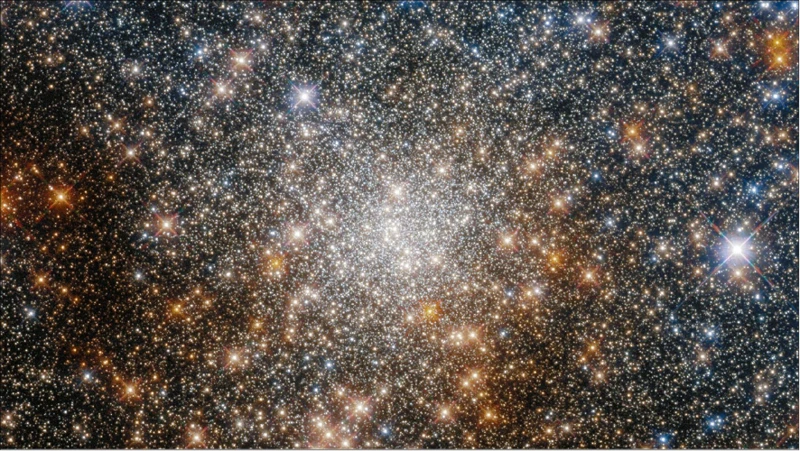
Currently, there are several ongoing efforts focused on studying and monitoring near-Earth asteroids to better understand their characteristics and minimize the potential risks they may pose. These efforts include:
- NASA’s Near-Earth Object Observations Program: NASA plays a crucial role in tracking and characterizing near-Earth asteroids through its Near-Earth Object Observations Program. This program utilizes ground-based telescopes and space-based observatories to identify and track these objects, providing valuable data about their size, shape, composition, and orbital parameters.
- International Efforts and Collaborations: The study of near-Earth asteroids is not limited to NASA alone. There are international collaborations and efforts involving various space agencies, observatories, and research institutions worldwide. These collaborations promote the sharing of data, expertise, and resources, leading to a more comprehensive understanding of these celestial objects.
- Advancements in Technology for Detection and Characterization: Technological advancements in the field of astronomy have significantly enhanced the ability to detect and characterize near-Earth asteroids. Advanced telescopes equipped with high-resolution imaging capabilities and sophisticated spectroscopic instruments allow scientists to gather detailed information about these asteroids. Additionally, radar systems have been employed to study their shape, size, and rotational characteristics.
These combined efforts contribute to our growing knowledge of near-Earth asteroids and enable us to improve our ability to predict and mitigate potential threats. By continuously monitoring these objects, scientists can identify potentially hazardous asteroids, provide early warnings, and potentially develop strategies to deflect or mitigate their impact. To learn more about the compatibility between Capricorn and Taurus zodiac signs, you can visit this link.
1. NASA’s Near-Earth Object Observations Program
The NASA‘s Near-Earth Object Observations (NEOO) Program is a crucial initiative aimed at detecting, tracking, and characterizing near-Earth asteroids (NEAs) that could potentially pose a threat to our planet. Established in 1998, the NEOO Program is responsible for locating and monitoring these asteroids, providing valuable data for scientific research and planetary defense strategies.
The program utilizes a network of ground-based telescopes and observatories, as well as space-based assets, to search for and track NEAs. It employs advanced technologies and techniques to enhance the accuracy and efficiency of asteroid observations. By precisely measuring the positions, sizes, shapes, and compositions of these objects, scientists can better understand their characteristics and potential impact hazards.
The NEOO Program has made significant contributions to the field of asteroid research. It has discovered and cataloged thousands of NEAs, expanding our knowledge of these objects and their orbits. It also plays a critical role in providing early warnings of potential asteroid impacts, enabling sufficient time for mitigation efforts if necessary. The program collaborates with international partners and organizations to enhance global efforts in monitoring and studying near-Earth asteroids.
The valuable data gathered through NASA’s NEOO Program not only contributes to our understanding of these celestial bodies but also helps in developing strategies to protect our planet from potential asteroid threats. Through continuous monitoring and technological advancements, NASA remains at the forefront of near-Earth asteroid observations, ensuring the safety and security of humanity.
2. International Efforts and Collaborations
International efforts and collaborations play a crucial role in the study and monitoring of near-Earth asteroids. Recognizing the global significance of these celestial bodies, organizations such as the International Astronomical Union (IAU) and the United Nations Office for Outer Space Affairs (UNOOSA) have facilitated international cooperation in this field. One notable initiative is the International Asteroid Warning Network (IAWN), which aims to coordinate and improve the international response to potential asteroid impact threats. Additionally, the United States and other nations collaborate through programs like the International Asteroid Impact Deflection Assessment (AIDA), a joint mission involving NASA and the European Space Agency (ESA), which plans to test asteroid deflection techniques. Such collaborations allow scientists and researchers from different countries to share data, resources, and expertise, enabling a more comprehensive understanding of near-Earth asteroids and enhancing our global efforts to safeguard our planet from potential asteroid impacts.
3. Advancements in Technology for Detection and Characterization
- Telescopes and Surveys: Technological advancements have greatly improved the ability to detect and track near-Earth asteroids. Large ground-based telescopes, such as the Panoramic Survey Telescope and Rapid Response System (Pan-STARRS), and space-based telescopes like the Near-Earth Object Surveillance Mission (NEOSM), scan the skies for these objects. These surveys utilize advanced imaging systems and algorithms to identify and catalog potential threats.
- Radar Systems: Radar systems play a crucial role in characterizing near-Earth asteroids. By bouncing radio waves off the surface of these objects, scientists can measure their size, shape, and rotation rate. This information helps in determining their composition, structure, and potential impact hazards. The Goldstone Deep Space Communications Complex in California and the Arecibo Observatory in Puerto Rico are among the prominent radar facilities used for this purpose.
- Spacecraft Missions: Sending spacecraft to near-Earth asteroids provides an up-close and personal look at these celestial bodies. Missions like NASA’s OSIRIS-REx and Japan’s Hayabusa2 have successfully visited near-Earth asteroids, collecting valuable data and samples. These missions employ advanced imaging instruments, spectrometers, and sampling mechanisms to study the asteroids’ composition and structure directly.
- Distributed Ground-Based Networks: Collaborative efforts between observatories and institutions around the world have resulted in the creation of distributed networks for asteroid detection and characterization. These networks, such as the International Asteroid Warning Network (IAWN) and the Space Surveillance Telescope Network (SSTN), share data and resources to improve coverage and response capabilities.
As technology continues to evolve, the field of near-Earth asteroid detection and characterization is expected to make further advancements, enabling a better understanding of these cosmic neighbors and enhancing our ability to assess potential threats.
Future Missions and Initiatives
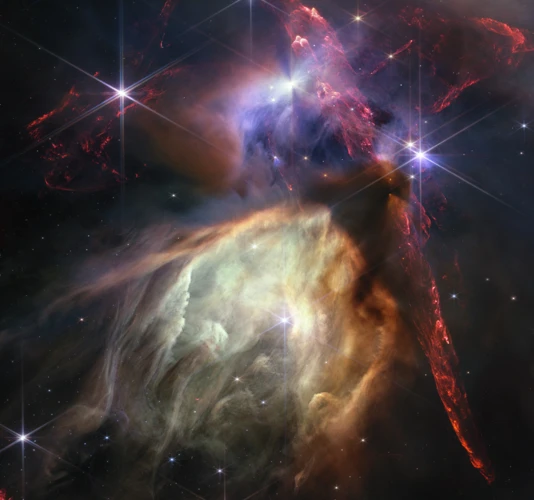
- Asteroid Redirect Mission: One of the future missions planned by NASA is the Asteroid Redirect Mission (ARM). The goal of this mission is to capture a small near-Earth asteroid and redirect it into a stable orbit around the Moon. By doing so, astronauts will be able to visit and study the asteroid up-close, gaining valuable insights into its composition and potential resources. This mission will also serve as an important stepping stone for future human missions to Mars.
- Planetary Defense Coordination Office: Another initiative focused on near-Earth asteroids is the Planetary Defense Coordination Office (PDCO). Established by NASA, the PDCO is responsible for detecting, tracking, and characterizing potentially hazardous asteroids that could pose a threat to Earth. The office works in collaboration with international partners and utilizes advanced technology to improve our understanding of asteroid threats and develop potential mitigation strategies.
1. Asteroid Redirect Mission
The Asteroid Redirect Mission (ARM) is an ambitious NASA endeavor aimed at redirecting a near-Earth asteroid’s trajectory. The primary goal of this mission is twofold: to practice the advanced technology needed for future human space exploration, and to further our understanding of near-Earth asteroids. The mission involves capturing a small boulder from the surface of a larger asteroid and bringing it into orbit around the Moon. This process provides valuable hands-on experience in spaceflight operations and robotic manipulation techniques. Additionally, studying the captured boulder will allow scientists to gain insights into the asteroid’s composition and structure. ARM represents a crucial stepping stone towards future human missions to Mars, as it provides valuable opportunities for testing technologies, such as the Solar Electric Propulsion System, which could be used for transportation to the red planet. With its focus on both scientific research and technological advancements, the Asteroid Redirect Mission holds great promise for the future of space exploration.
2. Planetary Defense Coordination Office
In order to protect our planet from potential asteroid impacts, the Planetary Defense Coordination Office (PDCO) was established. This office, which operates under NASA, is responsible for coordinating efforts to detect, track, and characterize near-Earth asteroids that could pose a threat to Earth. The PDCO works closely with other national and international organizations to develop plans and strategies for mitigating the risks of asteroid impacts. They also collaborate with scientists and researchers to enhance our understanding of these objects and improve our capabilities for early detection and impact prediction. Through its work, the Planetary Defense Coordination Office plays a vital role in safeguarding our planet from the potential dangers of near-Earth asteroids.
Conclusion

In conclusion, near-Earth asteroids are fascinating celestial objects that offer valuable insights into the origins of our solar system. Their diverse sizes and compositions provide clues about the early formation of planets and the distribution of resources in our cosmic neighborhood. Furthermore, the close approaches of these asteroids to Earth serve as a reminder of the potential threats they can pose to our planet. The study and monitoring of these objects is essential for ensuring the safety of our planet and advancing our understanding of the universe. Current efforts, such as NASA’s Near-Earth Object Observations Program and international collaborations, are actively involved in tracking and characterizing near-Earth asteroids. Additionally, advancements in technology continue to improve our ability to detect and study these objects. Future missions, like the Asteroid Redirect Mission and the Planetary Defense Coordination Office, aim to enhance our knowledge and capabilities in dealing with near-Earth asteroids. As we delve deeper into space exploration, the importance of studying and monitoring these cosmic neighbors cannot be overstated. So let’s continue to unlock the secrets of near-Earth asteroids and expand our understanding of the universe we inhabit.
Frequently Asked Questions

1. Can near-Earth asteroids collide with our planet?
Yes, there is a possibility of near-Earth asteroids colliding with Earth. While the chances of a catastrophic impact are rare, it is crucial to study and monitor these asteroids to better understand their behavior and potential risks.
2. How often do near-Earth asteroids approach Earth?
Near-Earth asteroids can pass by Earth on a regular basis. In fact, several thousands have been identified and tracked so far. However, the majority of these encounters pose no threat to our planet as they safely pass by at a significant distance.
3. Could a near-Earth asteroid cause significant damage?
Depending on its size and composition, a near-Earth asteroid could potentially cause significant damage if it were to collide with Earth. Larger asteroids have the potential to cause regional or even global devastation, highlighting the importance of continued monitoring and research.
4. How are near-Earth asteroids studied?
Near-Earth asteroids are studied through various means, including ground-based telescopes, space missions, and radar observations. These methods allow scientists to gather data on their size, shape, composition, and orbital characteristics, providing valuable insights into their properties.
5. Are near-Earth asteroids a threat to human life?
The likelihood of an asteroid impact causing harm to human life is relatively low. However, the potential risks warrant ongoing efforts to track and study near-Earth asteroids to ensure early detection and mitigation strategies can be implemented if necessary.
6. Can near-Earth asteroids be redirected or deflected?
There are proposed methods for redirecting or deflecting near-Earth asteroids if they pose a potential risk. These strategies include using spacecraft to alter the asteroid’s trajectory or employing gravitational forces to subtly change its course, thus avoiding a collision with Earth.
7. Do near-Earth asteroids have any scientific value?
Absolutely! Near-Earth asteroids are of significant scientific interest as they provide insights into the formation and evolution of our solar system. By studying their composition and structure, scientists can gain a better understanding of the processes that shaped the early Earth and other planetary bodies.
8. Are there any near-Earth asteroids that could be mined for resources?
Yes, some near-Earth asteroids contain valuable resources such as water ice and precious metals. These asteroids could potentially serve as future targets for mining operations, providing a source of valuable materials for future space exploration endeavors.
9. Can near-Earth asteroids be used for space missions?
Absolutely! Near-Earth asteroids can serve as potential destinations for space missions. By studying and exploring these asteroids up close, scientists can gather valuable data and test technologies that may be crucial for future manned missions to other celestial bodies in our solar system.
10. How are near-Earth asteroids named?
Near-Earth asteroids are typically assigned a designation consisting of a number and a name or a combination of letters and numbers. The International Astronomical Union (IAU) oversees the process of naming these asteroids, often based on the discoverer, the place of discovery, or other significant factors.
References
Frequently Asked Questions

1. How big are near-Earth asteroids?
Near-Earth asteroids come in various sizes, ranging from a few meters to several kilometers in diameter. Some of the largest known asteroids, such as 433 Eros and 1036 Ganymed, are classified as near-Earth asteroids.
2. What are near-Earth asteroids made of?
Near-Earth asteroids can have different compositions, but the most common types are rocky and metallic. They can contain various minerals, such as silicates, carbonates, and metals like iron and nickel.
3. How close do near-Earth asteroids come to our planet?
Near-Earth asteroids can come very close to Earth, sometimes even within a few thousand kilometers. These close approaches are known as near-misses, but the vast majority of them pose no threat to our planet.
4. Are near-Earth asteroids dangerous?
While most near-Earth asteroids do not pose an immediate threat, there is a small chance that a large asteroid could collide with our planet, potentially causing significant damage. However, extensive monitoring and study efforts are in place to mitigate this risk.
5. How do scientists study near-Earth asteroids?
Scientists study near-Earth asteroids through various methods, including telescopic observations, radar imaging, and spacecraft missions. These methods help gather valuable data about their size, composition, and orbital characteristics.
6. Can near-Earth asteroids provide insights into the origins of the solar system?
Absolutely! Near-Earth asteroids are remnants from the early stages of the solar system’s formation. By studying their composition and structure, scientists can gain valuable insights into the processes that shaped our cosmic neighborhood billions of years ago.
7. Are there any resources on near-Earth asteroids that can be useful for future space exploration?
Yes, near-Earth asteroids are believed to contain abundant resources, such as water, metals, and organic compounds. These resources can potentially be utilized by future space missions for fuel, building materials, and sustaining human activities.
8. How does NASA monitor near-Earth asteroids?
NASA’s Near-Earth Object Observations Program employs ground-based telescopes and space-based observatories to track and monitor near-Earth asteroids. This program plays a crucial role in identifying asteroids that may pose a potential threat to our planet.
9. Are there international collaborations in studying near-Earth asteroids?
Yes, there are international efforts and collaborations in studying near-Earth asteroids. Organizations like the European Space Agency (ESA) and international collaborations like the International Asteroid Warning Network (IAWN) work together to enhance our understanding of these celestial objects.
10. Are there any future missions planned to study near-Earth asteroids?
Absolutely! NASA has planned the Asteroid Redirect Mission, which aims to redirect a near-Earth asteroid into orbit around the Moon for further study. Additionally, the Planetary Defense Coordination Office is continuously working on initiatives to improve our ability to detect and mitigate potential asteroid threats.

